All about growing kohlrabi cabbage
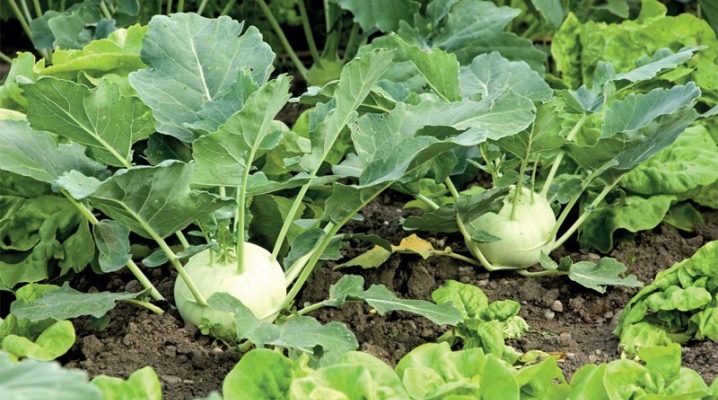
Sweet and juicy, one of the most unpretentious among all cabbage, used not only as a root vegetable, but even with young leaves - all this refers to kohlrabi. It is not yet called a frequenter of Russian vegetable gardens, but it seems that the popularity of the product is growing. And after all, kohlrabi has something to love for: a very useful, capricious cabbage will seem like a good find for a vegetable garden that is waiting for a "reboot".
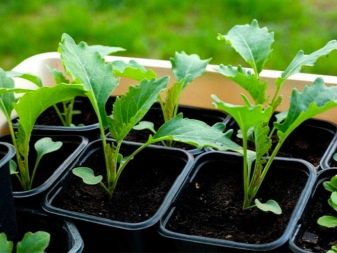
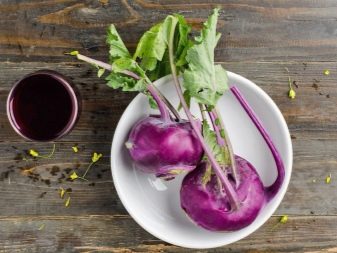
Variety selection
Those who have previously seen kohlrabi know that its stems can be either purple or greenish. They have white flesh inside. Cabbage varieties are also distinguished according to the ripening period - for example, early ripening ones will quickly please with a harvest, but they are not suitable for a long maturation, and later varieties will not ripen soon, but then they will completely last until spring.
Which kohlrabi varieties can be found more often than others in the recommendations:
- "Athena" - gives a stable yield, has a green stem with a juicy white pulp;
- "Giant" - a late drought-resistant variety with a pale green stem, which can weigh up to 6 kg, it is distinguished by a concave top and juicy pulp;
- "Moravia" - an early ripe variety with a rounded stem, weighing 2 kg with a small one, with a very tasty pulp inside;
- "Gusto" - also an early ripe variety of dark purple color, medium-sized, with dense and juicy pulp, very tasty, but not suitable for long maturation;
- "Pikant" - also applies to early ripening varieties, which almost never crack (and this happens with kohlrabi);
- "Blue planet" - a hybrid variety with excellent keeping quality, blue-green stem plant up to 250 g in weight, very delicate flesh inside.
And this is a small part of the varieties that are worthy of attention, because “Caratago”, and “Dvorona”, and “Violetta” are also in demand. And then you need to grow seedlings.
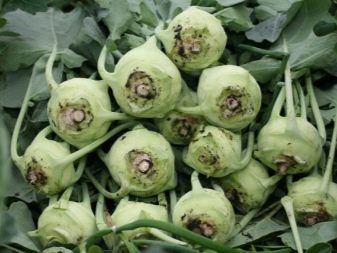
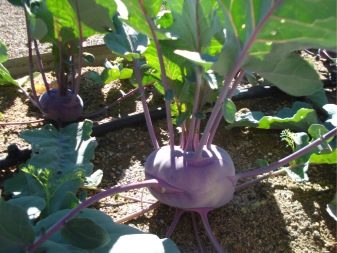
How to grow seedlings?
The seedling method allows you to get an early harvest, and not one, but even 2 or 3. That is why the method is so popular, and there is no great difficulty in it. It is almost impossible to buy kohlrabi seedlings on the market, which means that you will have to practice growing seedlings yourself.
Preparation
This is, first of all, calibration - you need to sort out the seeds, leaving only the largest of them. Then the seed is to be disinfected: send the selected seeds to water at a temperature of 50 degrees for 15 minutes. Then steamed seeds are sent to cold water. After that, they are soaked in a solution of trace elements. After the procedure, the seeds must be washed and dried.
And preparation will not do without hardening: for a day, the seeds are sent to the refrigerator, to the lower shelf. This is a normal practice, you should not be afraid of freezing. By the way, if the seeds are bought in a store, and each of them is covered with a colored shell, this material can be planted immediately, it no longer needs preparation.


Sowing
The first sowing is considered to be quite early - it falls in mid-March. Early and mid-season varieties are used for it. It is necessary to grow seedlings exclusively in comfort, in the room just on the windowsill, or it is possible in a greenhouse, but only heated. And if the sowing was so early, then it is possible to get the harvest in June.
The second time to plant seeds of varieties of medium and late ripening can be in the first days of May. In July, the stems can already be harvested. The third sowing wave is on the 20th of June. The harvest will be late, only in October-November.Late varieties are not grown in the northern regions, the formation of a stem-bearing will be questionable. But in the southern regions, the sowing may be February.
Seed sowing algorithm.
- Prepared containers must be filled with soil mixture that has already been decontaminated. For this, you can use potassium permanganate.
- In moistened soil, grooves are made 1 cm wide; for greater convenience, they also take a ruler.
- Seeds are laid out every 1.5 cm, the interval between grooves is 3 cm. Small seeds can be easily distributed with tweezers in the ground.
- From above, you need to sprinkle the grooves a little with earth, compact a little.
- The container with seeds must be covered with polyethylene or glass, put in a place with good lighting, the temperature level is 18-20 degrees.
That's it, sowing itself is not difficult. And then you need to take care of the future seedlings.

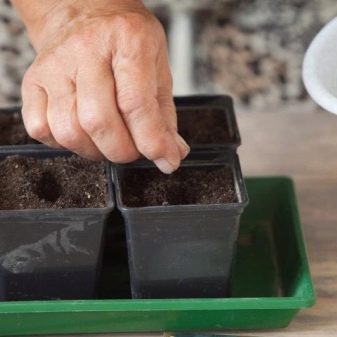
Care
There is nothing complicated about it. Properly treated seeds will sprout on the 4th or 5th day, this is quick. In order not to get too elongated seedlings, containers with them are transferred to a room where the temperature will be 9-10 degrees. That is, at home, it can be a balcony, a veranda, a pantry. But after a week and a half, the plants need to be returned to their usual comfortable conditions. The place where the seedlings grow should be well lit, so the plants will get stronger. A window sill of a southern or southwestern direction is suitable.
How else to care for seedlings.
- Kohlrabi at this stage needs three feeding times. The first time is after 3-4 real leaves appear there. Then the schedule is drawn up so that the last feeding falls on the time before planting the young cabbage in a permanent place. Universal mixtures as fertilizers are what you need. The main thing is that they contain potassium, phosphorus, nitrogen.
- Foliar dressing is also possible. The first time it is carried out when 2-3 real leaves appear on the kohlrabi - this will be spraying with 1 liter of water and 0.5 tsp. complex preparation. The second spraying is appropriate at the hardening stage, and potassium sulfate mixed with urea (1 tablespoon of each product per 10 liters of water) is suitable for this.
- Watering the seedlings should be moderate; in case of waterlogged soil, expect diseases. But dry soil also looks dangerous for the growth of kohlrabi.
- The culture perceives a picking badly, because it is extremely traumatic for the roots. But if it is carried out, then at the moment the first true leaf appears on the seedling.
- In order not to expose the plant to severe stress, experienced gardeners prefer to do this: for sowing, containers with cells are used, as an alternative - peat tablets. You can also grow it in disposable cups. 2-3 seeds are sent to each container, they are looked after in the same way as for ordinary seedlings. After the emergence of three leaves, only the most powerful seedling is selected, the rest are removed.
After the seedlings are ready to go into open ground, you need to prepare it.
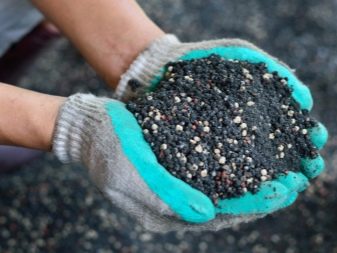
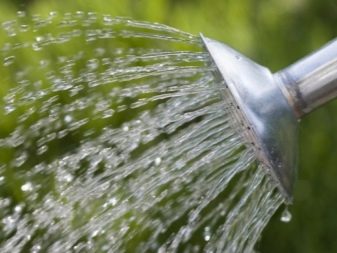
How to plant outdoors?
Before planting, the seedlings are certainly hardened: even 2 weeks before planting in the room where the seedlings grow, it is necessary to open the window more often (excluding the draft). On clear days, the container with cabbage should be sent outside, with a gradual increase in time. Any watering stops a week before the transplant. The plant will need abundant moisture only 2 hours before planting.
The readiness of a seedling to transplant into open ground is determined by the development of 5-6 true leaves. They usually appear when the seedlings are 30-40 days old.

Seeds
And you can also go to such an experiment, but only if the place of residence is the southern region. It is too risky elsewhere. It is better to sow seeds in open ground in mid-June, if you do this in May, the entire germination zone will need to be covered with agrofibre.
The main thing about planting with seeds:
- kohlrabi will take root well in sunny areas;
- the optimal soil for a plant is loam;
- acidic soil needs to be alkalized, otherwise the pulp of the plant will be rough (but this should be done at the end of autumn, preparing the soil for the season);
- at the time of planting, the ground must be leveled, the rows must be marked with a rope, and not very deep grooves must be dug with a pin;
- spill grooves with some water from a watering can;
- plant seeds 20 cm apart, if sowing thicker, then you will have to thin out;
- row spacing - 60 cm;
- It is not necessary to plant the seeds deeper than 2 cm; they must be sprinkled with earth on top.
Regardless of the planting method, the plant needs to be well cared for. He will also help him to adapt in the open field.
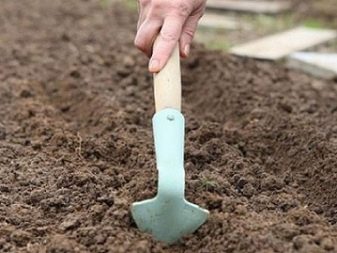
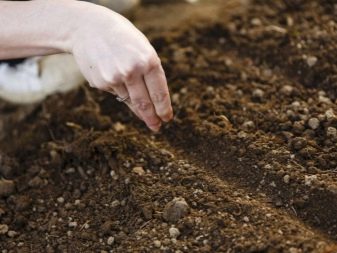
Seedlings
It is possible to transplant kohlrabi in the country only when the risk of frost is no longer there, and during the day the temperature is kept around +14 degrees. But such a scheme is only possible in the south. In Siberia, in the Urals, after planting, the seedlings are certainly covered with a film or non-woven fabric. Planting kohlrabi in a productive seedling way looks like this.
- A hole is dug in the garden bed, into which the seedling root ball will fit well.
- A glass of ash, 2 tablespoons of superphosphate and 1 teaspoon of urea are poured there. All preparations are thoroughly mixed with the ground.
- You need to pour in enough water so that the mass begins to resemble sour cream.
- The young vegetable is sent there. A safe handling method is used that protects the roots as much as possible.
- A little dry earth is poured from above.
- The distance between seedlings for early maturing varieties is 20-30 cm, as well as 60 cm between rows. Late varieties should be properly planted at intervals of 35-45 cm, maintaining 70 cm of row spacing. This will help make the neighborhood between the bushes comfortable.
It is better to plan a landing on a cloudy day or at a time when the sun is clearly setting. If the next day there is an active sun, the seedlings should definitely be shaded for two days, at the time of adaptation. Good predecessors for this cabbage are potatoes, zucchini, cereals, as well as cucumbers, carrots, onions and green manure. It is undesirable to grow kohlrabi in the place where cabbage, tomatoes, radish, turnip and radish grew last season.


Follow-up care
All actions that are really important if it is decided to grow rare cabbage in the garden can be reduced to 8 simple rules. Agricultural rules, and not only for kohlrabi.
- Regular weeding is a must, because this cabbage grows well only in clean soil.
- Loosening promotes aeration of the roots, which is also important for the palatability of the head pulp.
- Before the stem grower begins to form, the plant needs hilling. Hilling is important for getting beautiful, correct heads of cabbage. And also you need to make sure that at the time when the heads of cabbage are tied, they are not covered with earth.
- Proper watering means moistening the soil every 3 days. But when the cabbage takes root, and it usually happens after 2 weeks, you need to water the kohlrabi once a week.
- The irrigation regime is normal, and excessive moisture and drying out of the soil should not be allowed.
- Wood ash is good as a top dressing, it also protects a young plant from drafts - it is easy to feed ash, it is sprinkled with kohlrabi foliage.
- Potassium-phosphorus fertilizers are also necessary for kohlrabi, their deficiency will affect the quality of the heads of cabbage (with a lack of phosphorus, the leaves will be small, with a deficiency of potassium, chlorotic spots will appear on the foliage).
- If all the important fertilizers were applied in the fall, during the preparation of the soil, you don't have to worry. Then kohlrabi will need top dressing only at the time of the formation of the stalk.
There are no special nuances in the cultivation of this cabbage. But you need to take care not only of the land and the plant itself, but also of the territory in which they grow. And where pests are so eager to get.

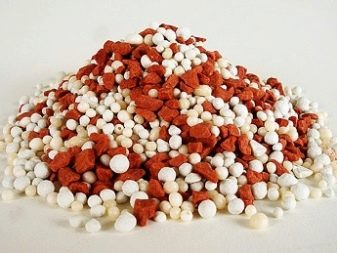
Diseases and pests
Kohlrabi is a member of the cruciferous family, which explains the nature of diseases and pests that can ruin crops.
Here's what to fear.
- Cabbage keel. A fungal disease that can affect even kohlrabi seedlings. Lumpy growths form on the roots of the affected plant. The plant will lag behind in growth, its leaves will begin to fade. It is impossible to cure, just remove diseased plants and burn them. Only prevention can save cabbage from keel, and this is the treatment of seedlings with "Tiovit", colloidal sulfur. The soil is necessarily cleaved - if it is acidic, the disease settles there much more often.
- Mucous bacteriosis. A threat to kohlrabi at any stage of growth. Most often, the problem manifests itself during storage of the vegetable. The disease is spread by harmful insects. Seedlings are sprayed with "Planriz" or "Binoram" - the first is prophylactic, the second is therapeutic (but only in the early stages).
- Peronosporosis (downy mildew). At the end of the growing season, symptoms of this disease may appear - yellow spots on the foliage, on the back side the leaf is covered with a white bloom. With significant moisture and thickening of the plantings, the disease progresses faster. The infected plant is urgently removed from the garden, destroyed. Others need spraying with "Ridomil-Gold" or "Topaz", "Skor", "Vectra".
Of the pests for this culture, the cabbage fly is the most dangerous, and also the cabbage aphid, petiolate mosquito, wavy flea, and cabbage and turnip whites.
So that neither caterpillars nor other insects bring the crop to the state of "barely holding and cracking", it is imperative to remove weeds in a timely manner, observe crop rotation, plant pest-repelling plants in the beds - the same garlic, coriander, ordinary onions.
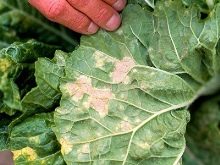

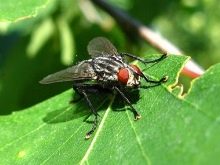
Harvesting and storage
Harvesting is one of the most enjoyable moments of the whole process. When the fruit grows up to 10 cm in volume, you can understand that the cabbage is ripe, and it's time to harvest it. Overexposure affects the taste properties of kohlrabi: its flesh coarsens, becomes fibrous, and there are much less nutrients in the plant.
The ripening dates are usually known in advance, they are different for each variety, and there should not be big advances. You need to harvest kohlrabi on a dry day. The stem plant is always dug up by the root, put in the shade to dry. The earth is cleaned from the plant, the leaves and roots are cut. And if this head of cabbage is put in a perforated bag, it can be stored for a month calmly, but in the refrigerator. In a cellar with an established ventilation, the harvest is well preserved for up to six months, also with cut leaves only. Usually cabbage is placed in boxes and sprinkled with sand, the temperature should be around zero, humidity - up to 95%.
And if you don't want to worry about the storage time at all, to know in advance that the cabbage will last all winter, then it is better to just chop the kohlrabi on a coarse grater, put it in bags, send it to the freezer. Both in winter and in spring, such stocks can definitely be used. Here is such a culture - a little unusual in shape, but with fairly standard criteria and growth characteristics. It is cross-pollinated, it is characterized by safer planting of seedlings, the presence of varieties of different ripening periods, traditional care and predictable diseases - there is no more fear for the success of such a crop than for more familiar garden plants.
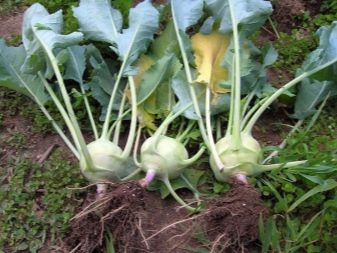
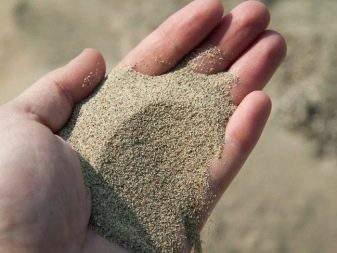













The comment was sent successfully.